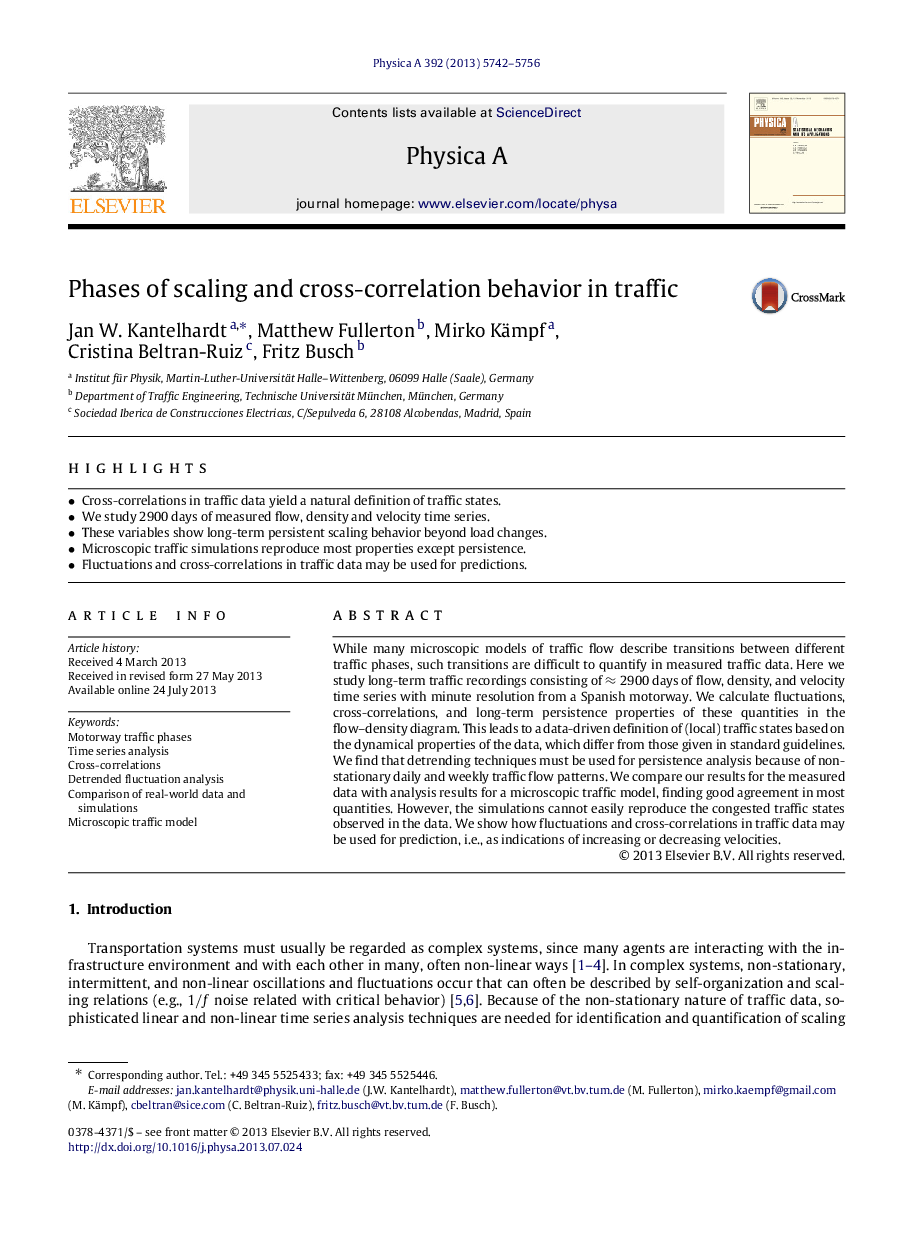| Article ID | Journal | Published Year | Pages | File Type |
|---|---|---|---|---|
| 977798 | Physica A: Statistical Mechanics and its Applications | 2013 | 15 Pages |
•Cross-correlations in traffic data yield a natural definition of traffic states.•We study 2900 days of measured flow, density and velocity time series.•These variables show long-term persistent scaling behavior beyond load changes.•Microscopic traffic simulations reproduce most properties except persistence.•Fluctuations and cross-correlations in traffic data may be used for predictions.
While many microscopic models of traffic flow describe transitions between different traffic phases, such transitions are difficult to quantify in measured traffic data. Here we study long-term traffic recordings consisting of ≈2900≈2900 days of flow, density, and velocity time series with minute resolution from a Spanish motorway. We calculate fluctuations, cross-correlations, and long-term persistence properties of these quantities in the flow–density diagram. This leads to a data-driven definition of (local) traffic states based on the dynamical properties of the data, which differ from those given in standard guidelines. We find that detrending techniques must be used for persistence analysis because of non-stationary daily and weekly traffic flow patterns. We compare our results for the measured data with analysis results for a microscopic traffic model, finding good agreement in most quantities. However, the simulations cannot easily reproduce the congested traffic states observed in the data. We show how fluctuations and cross-correlations in traffic data may be used for prediction, i.e., as indications of increasing or decreasing velocities.
